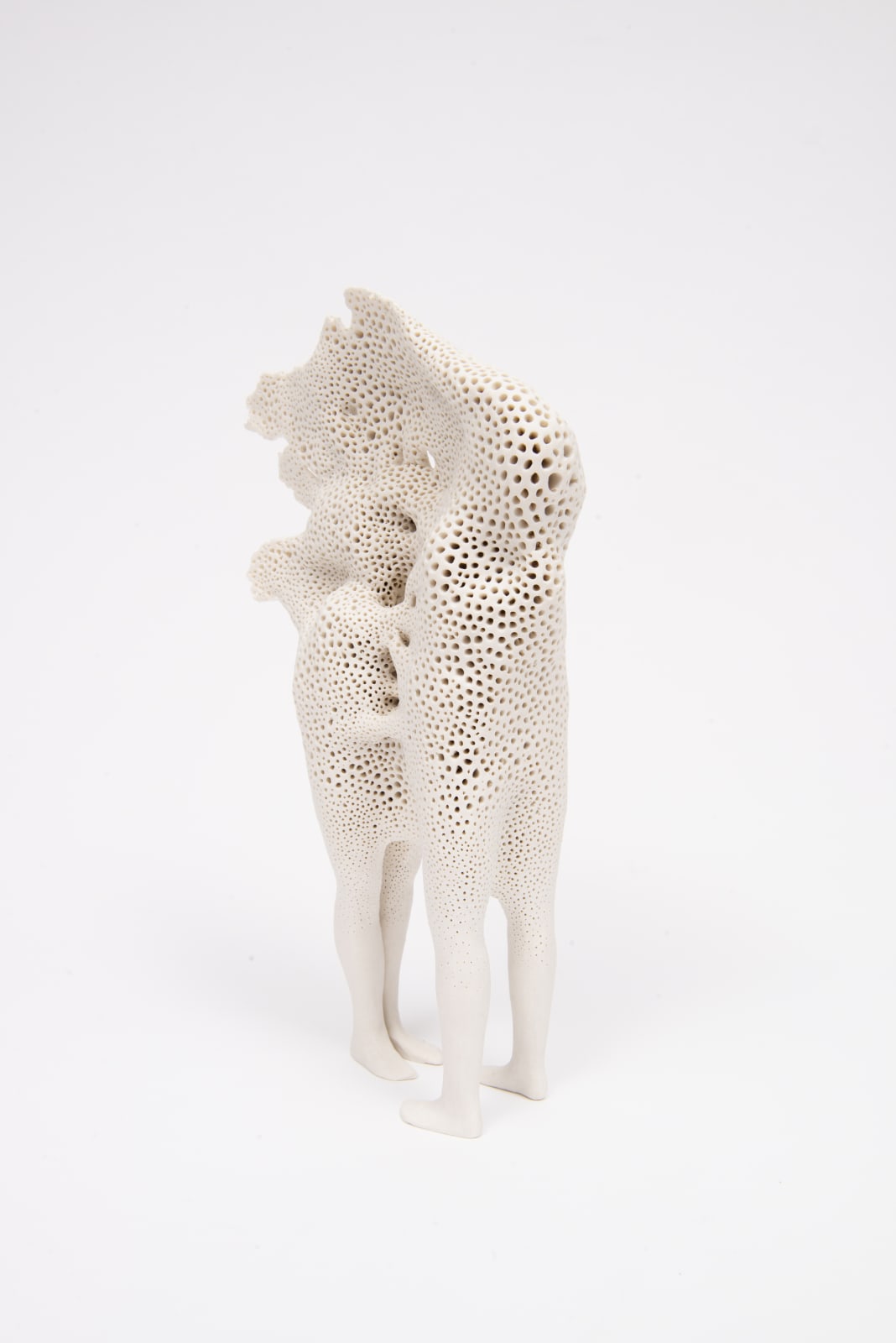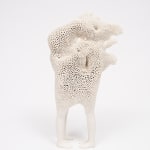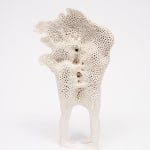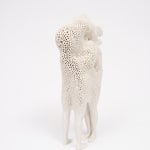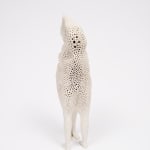Claudia Fontes Argentinean, b. 1964
Foreigners #29, 2019
Porcelain
29 x 20 x 11 cms
11 3/8 x 7 7/8 x 4 3/8 inches
11 3/8 x 7 7/8 x 4 3/8 inches
Series: Foreigners
Further images
The faceless figures are consumed by, or emerge from natural forms. Made from porcelain, these sculptures are stylised, fragile, white figures with defined anatomical details. Born and raised in Argentina,...
The faceless figures are consumed by, or emerge from natural forms. Made from porcelain, these sculptures are stylised, fragile, white figures with defined anatomical details. Born and raised in Argentina, Fontes has spent the last ten years living and working in England. Foreigners #29 is her reflection on her own family’s position as foreigners, and how this label categorizes her family not as they are, but rather how they are perceived.
Artist statement on the series Foreignors :
'After moving to England, I started working in porcelain extracted from English quarries in an attempt to appropriate a piece of England for myself. These small-scale sculptures, resembling collectable china figurines, are the size of my hand. The choice of scale, material, and the care I put in its fragile construction are an attempt to denaturalize and question the validity of the word “foreigner”, used popularly in England in a pejorative and discriminatory sense.
These figurines depict processes of metamorphosis and hybridisation amongst the creatures I share this particular bio-political system with: trees, plants, rocks and fungi.
“Foreigner" and “Forest" share the same root, “foris”, which means outside - outside the house, the city, the country, and outside of our own understanding of the world as humans.
Apparently the experience of weighing something in our hand is crucial in the formation of concepts in our mind. There is this hypothesis that attempts to explain the size of neolithic figurines, that says that they could have had the specific function of creating the concept of ‘person’ in our mind at the very point when we started exploiting our environment.
With this in mind, my “Foreigners” are an attempt to put out there the question of what it is to be a person in the forest and with the forest, rather than outside of it.'
Artist statement on the series Foreignors :
'After moving to England, I started working in porcelain extracted from English quarries in an attempt to appropriate a piece of England for myself. These small-scale sculptures, resembling collectable china figurines, are the size of my hand. The choice of scale, material, and the care I put in its fragile construction are an attempt to denaturalize and question the validity of the word “foreigner”, used popularly in England in a pejorative and discriminatory sense.
These figurines depict processes of metamorphosis and hybridisation amongst the creatures I share this particular bio-political system with: trees, plants, rocks and fungi.
“Foreigner" and “Forest" share the same root, “foris”, which means outside - outside the house, the city, the country, and outside of our own understanding of the world as humans.
Apparently the experience of weighing something in our hand is crucial in the formation of concepts in our mind. There is this hypothesis that attempts to explain the size of neolithic figurines, that says that they could have had the specific function of creating the concept of ‘person’ in our mind at the very point when we started exploiting our environment.
With this in mind, my “Foreigners” are an attempt to put out there the question of what it is to be a person in the forest and with the forest, rather than outside of it.'
Provenance
Direct from artist studioJoin our mailing list
* denotes required fields
We use cookies on our website to improve your experience. You can find out why by reading our Privacy Policy.
By continuing to browse our site you agree to our use of cookies.

